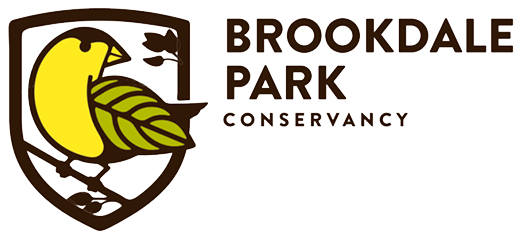by Tara Kender
The arrival of spring after a long winter can make us eager for early blooming plants, but we are not the only ones who are looking forward to early flowers. Our native pollinators rely on these blooms as an important food source. While our first thought might be of herbaceous perennials as food sources for pollinators, early-blooming native trees are the first significant source of pollen and nectar for bees in spring. These trees help satisfy pollinators' need for carbohydrates, which they use to fuel activities like foraging and nest construction.
These early bloomers also provide a food source to native butterfly and moth larvae. The larvae of most native butterflies and moths have very specific diets, and the plants that they require are referred to as host plants. Many of our native trees are also host plants for several different species of butterflies and moths.
Red Maples (Acer rubrum) are one our park’s earliest bloomers. The genus Acer supports over 280 species of butterfly and moth caterpillars, including the Rosy Maple Moth (Dryocampa rubicunda) and the Imperial Moth (Eacles imperialis). Humans place great value on maple foliage, wood, and syrup; but we have yet another reason to love this great American stalwart: it’s simply bee gold.
Our early pollinators, including bumble bees, cellophane bees, mining bees, and sweat bees will gather nectar and pollen from the maple flowers. The seeds, buds, and flowers also serve as a food source for various wildlife species.
photo credit Nicholas Dorian
Eastern redbud (Cercis canadensis) features purple blossoms that cover the branches before its leaves appear. These blossoms are rich in both nectar and pollen and provide a valuable food source for bees in early spring, a time when food is scarce. Redbud is favored by the blue orchard bee, as well as by bumblebees, mason bees, cuckoo bees, long-horned bees, mining bees, blueberry bees, and sweat bees. Eastern redbud is a larval host plant for 12 butterfly species and the seedpods provide food for birds throughout the fall and winter.
Flowering dogwoods (Cornus florida) are another early bloomer that is extremely valuable for wildlife. You are probably familiar with the four white or pink notched petals that appear before their leaves in March through May. These are not flowers at all, but are 2-inch long bracts or modified leaves. The true flowers of this dogwood species are found in the center of the bracts and are small and greenish-yellow. Despite their small size, these true flowers support many specialized bees, including several of our native mining bees (Andrena fragilis, A. integra, A. platyparia).
Glossy, bright-red, oval fruit follows in the fall and is eaten by birds and mammals such as chipmunks, black bear, foxes, skunks, and squirrels. Flowering Dogwood is also a host plant for butterfly and moth larvae, including the Spring Azure Butterfly (Celastrina “ladon”).
Tree flowers are often inconspicuous, so you may not notice them, but they are a crucial source of pollen and nectar for pollinators when they emerge in late winter or early spring. On your next loop through Brookdale Park, be sure to look up and see how many different kinds of flowering trees you can find!
Ready to learn more about the trees in our park?
Join us April 12 at 10 AM for our Tree Walk. Our guide is Cam Kanterman. We meet at the lower level parking lot. This is presented in partnership with The Judy Weston Garden as part of a townwide series of April events - Arbor Days in Earth Month. If the weather is stormy on the 12th please check social media to see if we are moving to our rain date of 4/13.
Help plant 1000 native plants!
Join us for our Earth Day Volunteer Event 4/26 10AM-Noon. Register at volunteer@brookdalepark.org
Tara Kender is an At-Large Trustee of the Brookdale Park Conservancy and the behind the scenes operator of the Conservancy’s social media channels.






